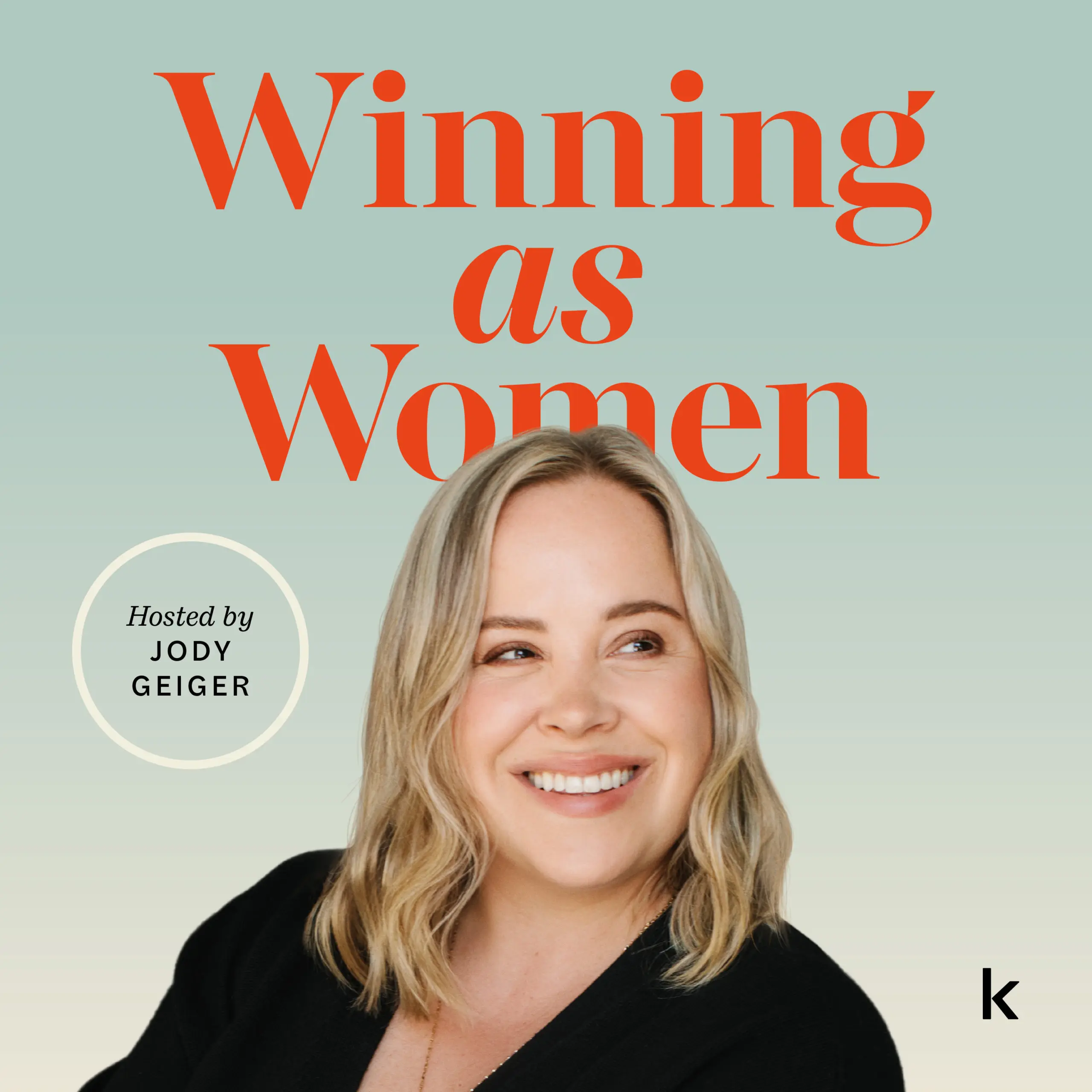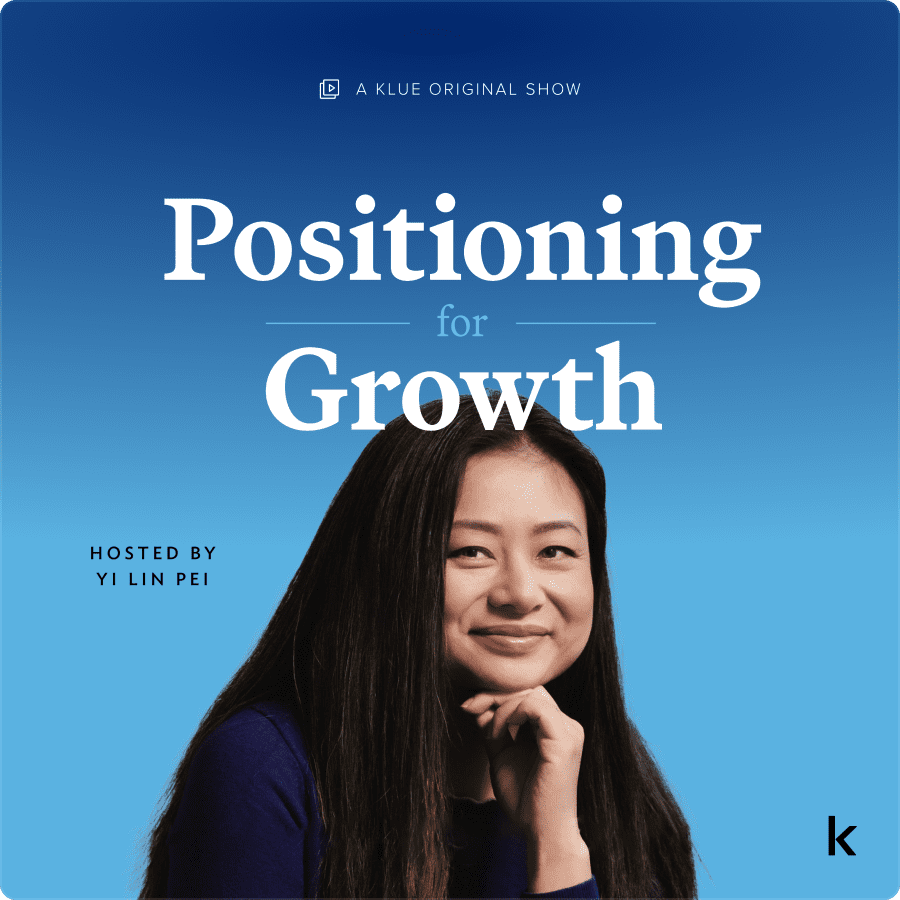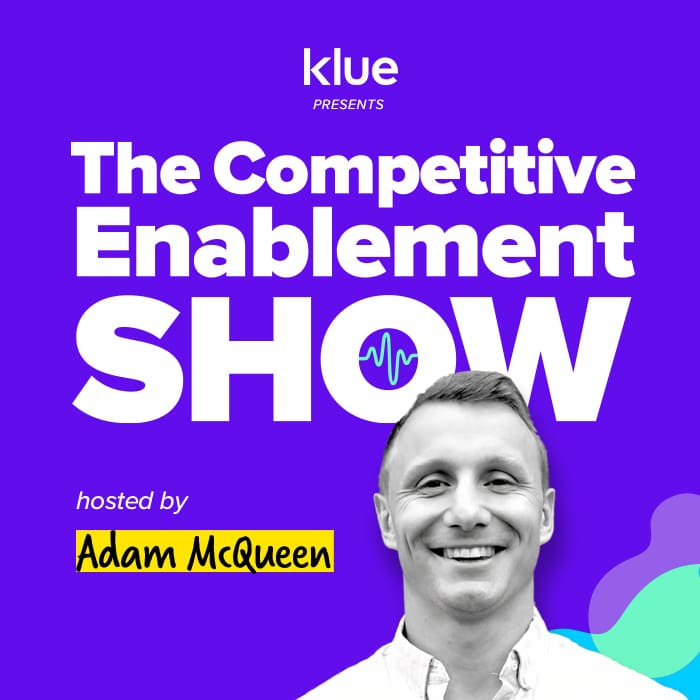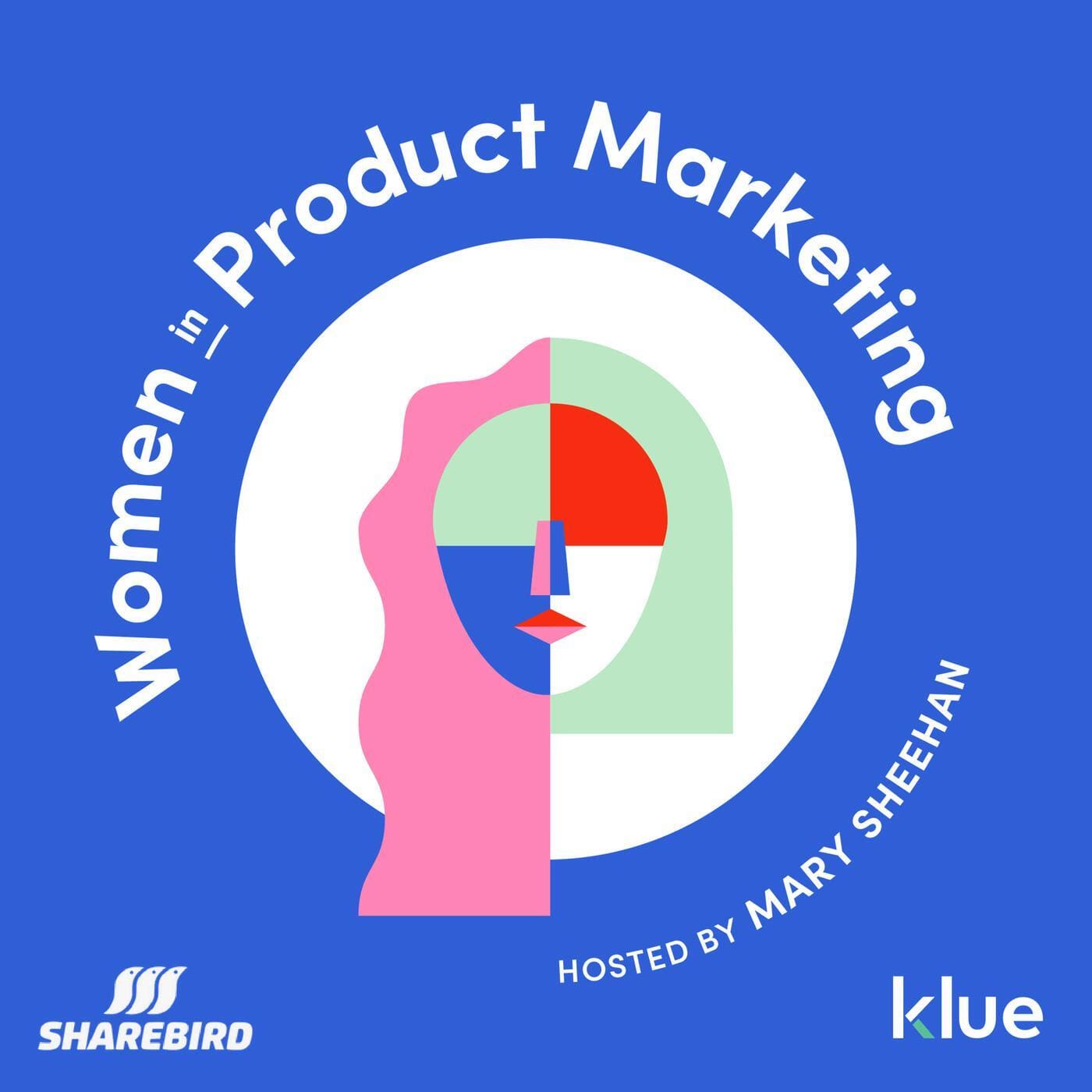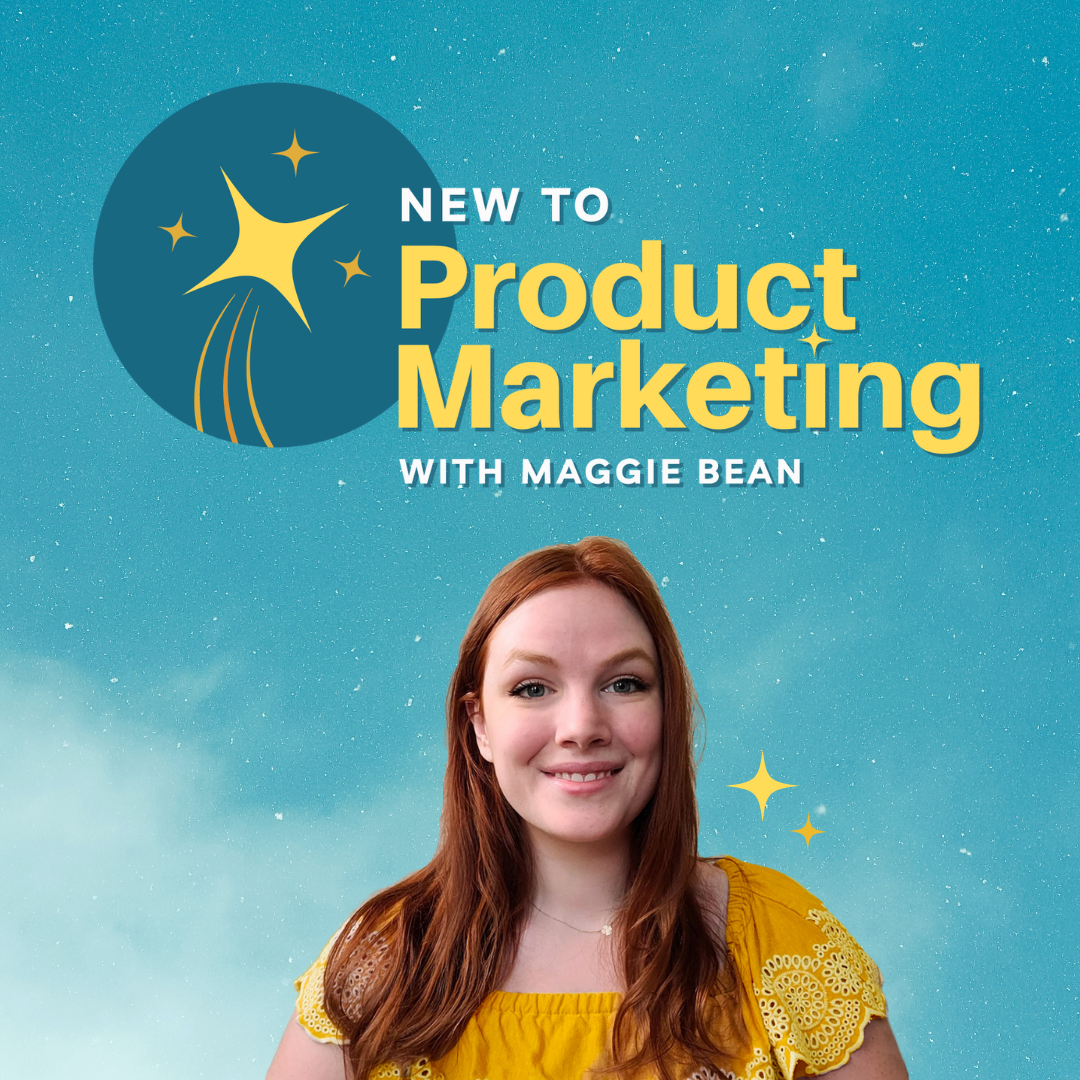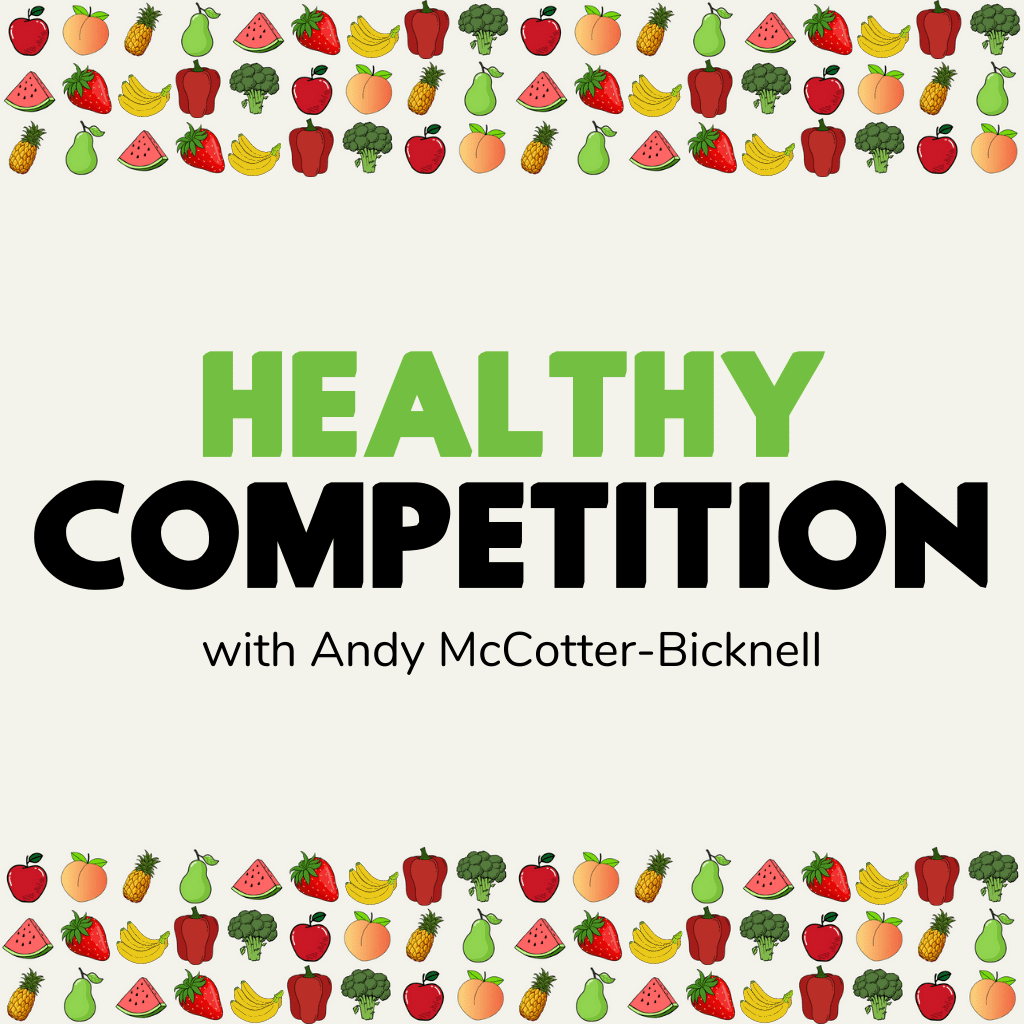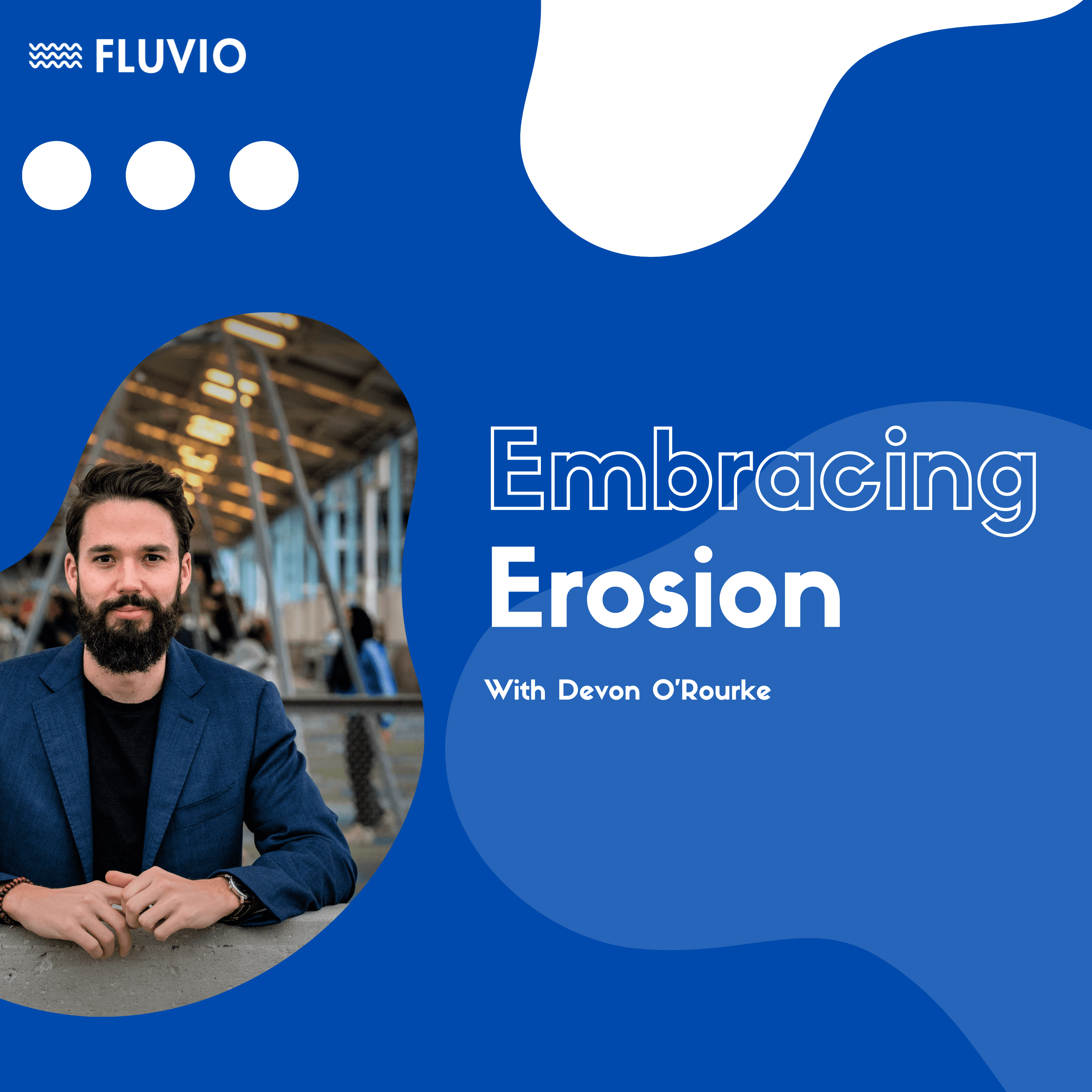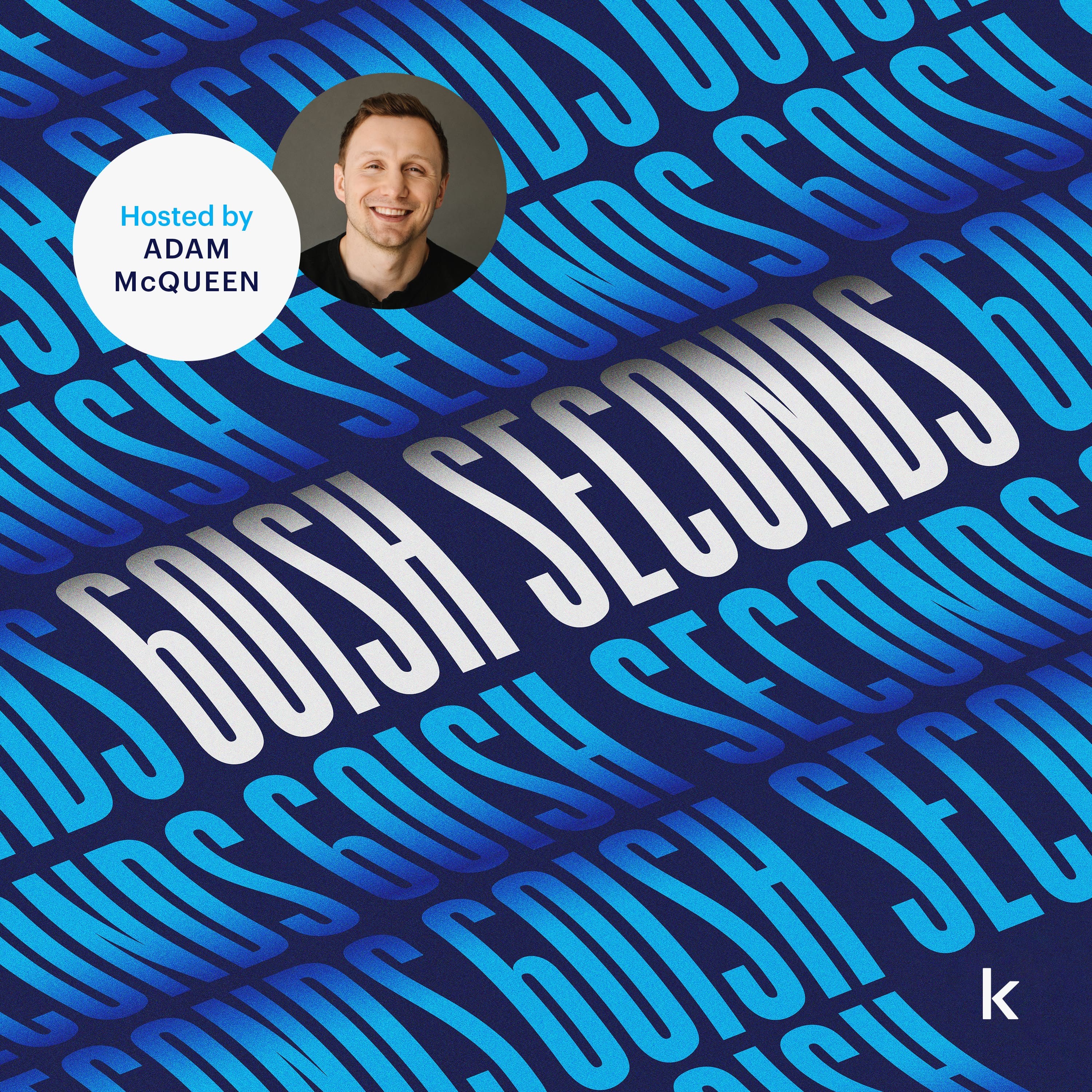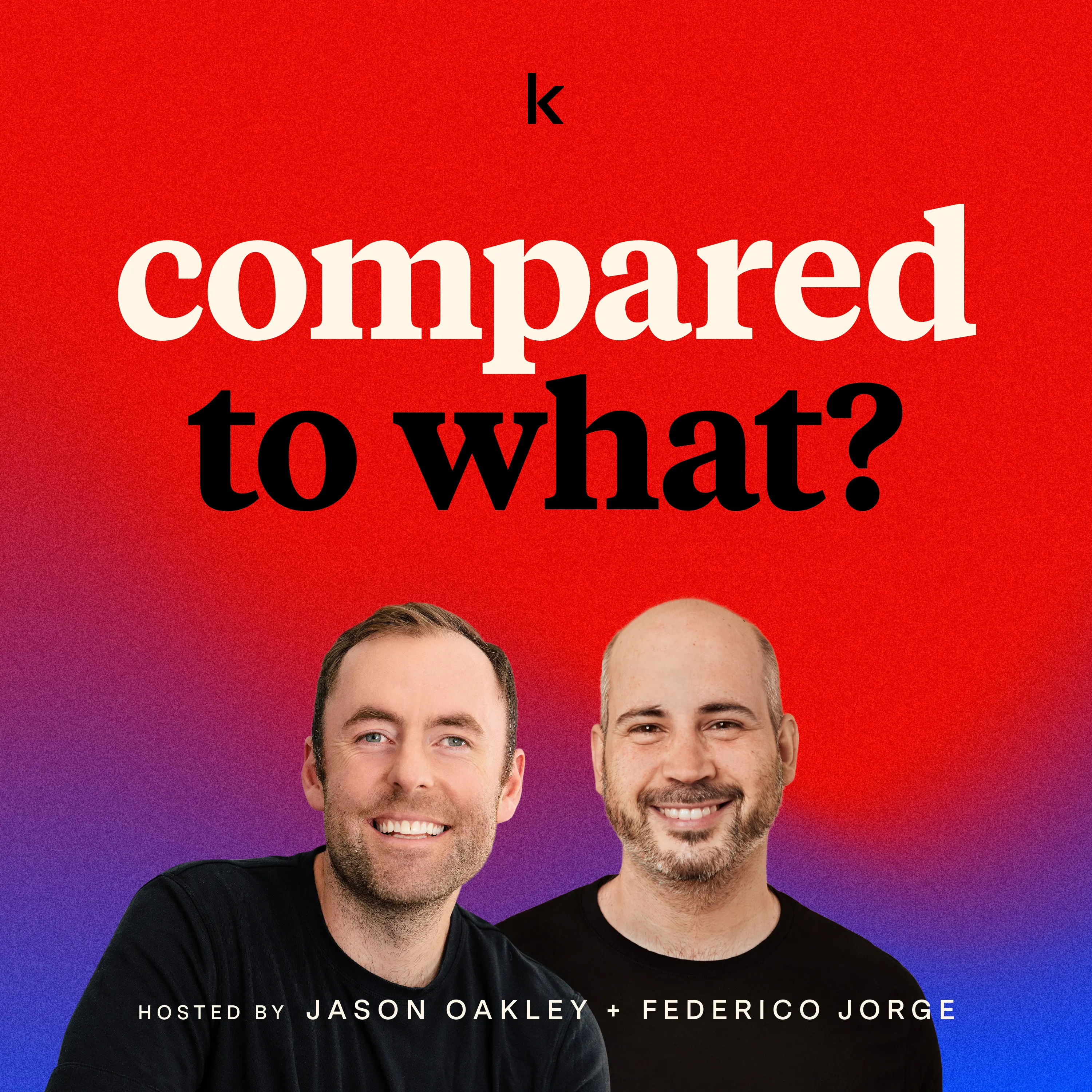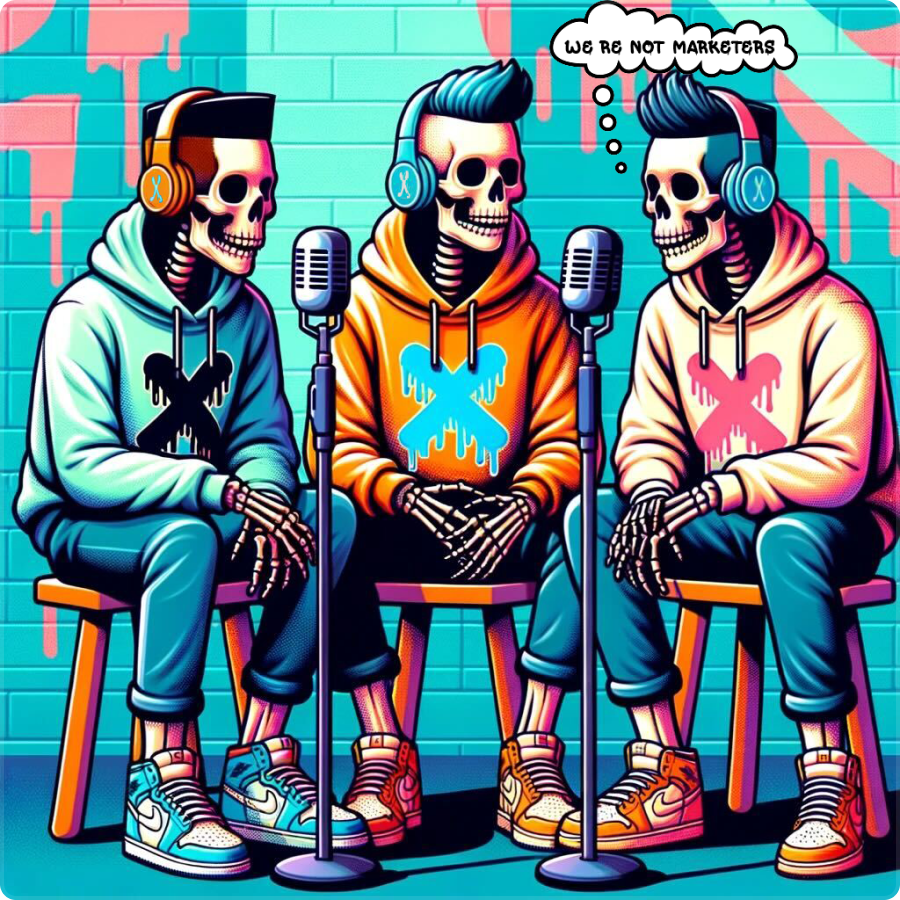Live(ish) from SCIP IntelliCon 2022 | Part I
The Transcript
Adam McQueen, Content Lead at Klue:
Hey, everyone, and welcome to another episode of the Competitive Enablement Show. I’m your host, Adam McQueen, and I am live in Minneapolis at IntelliCon with our friends from SCIP.
Today’s episode is going to be a collection of some of the smartest people in Compete, taking time out of their day to stop by our booth and chat with me. It’s Klue live(ish) from IntelliCon Part I one.
We hope you enjoy today’s episode.
Adam:
All right. Today, I’m joined by Lisa Goldberg from Ellucian, and she is the senior director of market strategy. So what was the first thing you did when you got into your role and compete?
Lisa Goldberg, Sr. Director of Global Market Strategy at Ellucian:
The first thing I did when I got into the role was, I had to build a PowerPoint for the executive leadership, explaining to them what competitive intelligence was. And why they decided to make this new role and why they put me in it.
So it was interesting, because I was already a SCIP member even before I had this role, I used information from the website and some of the tools, and mapped it out for them [to dive] into: Here are the basic areas that we should cover. Here’s how we’ll do it.
You know, the legal guy immediately was like, Oh, we can’t do this. This is not right. And I said, No, we’re going to do it with public information. Don’t worry, it’s I’m not a spy because that’s what everybody thought. I was like, No, everything’s ethical, legal. We’re using publicly available information. We’re just bringing it together in a way that educates everybody.
Adam:
One of the things I want to ask you is, if you could go back in time and tell yourself one thing when you were starting compete with the experience you have now, what would it be?
Lisa:
I think the one thing that I would tell myself is: know your audience. Because your audiences are going to vary. And not only will they vary, but not everybody consumes information in the same way.
So you really have to understand what the audience is, [what their] expectations are what they’re looking for from your content or your contributions.
And then how do they best consume that information? Are they a visual learner? You know, did they get a PowerPoint and they know what it means and they can understand it? Or are they auditory? Do they need you to tell them about it?
And just making sure that you are trying your best to deliver to everybody’s expectations so that they understand the information and can use it to the betterment of the company.
Adam:
I’m joined by Ashley Eisinger, our friend from Highspot, I’d say one of on the Mount Rushmore, friends of the podcast, friends of the show. I am so excited to see you in person and I’m so excited to have you join the show.
So when you started your complete career, can you remember one of the first things you did when you joined and started diving into Competitive Enablement?
Ashleigh Eisinger, Competitive Intelligence Analyst at Highspot:
So one of the first things I did was go through everything that had been done before by my predecessor. So my previous company, we had some competitive that had been in place, but it wasn’t really super focused.
So I had to let go back through and see, okay, like take inventory. What did we have? Was it still good? Was it still useful and then really move forward from there?
That was a good exercise (…) It depends on how into competitive your company is currently, but it is good background.
[Was] that super useful? It really depends. But if nothing else, it laid a foundation or a framework for me for okay, so this is what’s been done in the past.
How can I either make this better or totally deviate and do something completely different? Right. So it was good. I don’t know if I would do it again from scratch.
Adam:
What is one thing you could tell your former self when you were starting off your career and compete?
Ashley:
You don’t have to get it perfectly the first time. I think that’s biggest thing to remember in any career, but I feel like [with] compete it’s a huge one: baby steps make big impacts.
A lot of time, especially when I was first starting out, I was really worried about getting everything perfect the very first time having a very polished.
And one of your recent podcasts, you were talking to Andy Bicknell, and he was saying, you know, imagining the CEO that’s going to find the battle card and be like, oh, this battle card is perfect. Right?
And that was me, too? Like 100%. But really, the thing that I found was most valuable was getting these pieces of intel, [and] working it so that it was something that was functional for my salespeople or for my marketing folks, handing it to them and saying, okay, this is what I got. How can this get better? Is this useful to you?
And then really iterating on that messaging. So really take the intel you have. Take the stuff you have, baby steps, and disperse it amongst your stakeholders. Say, is this helpful to you? Is this useful to you? And then go from there.
It doesn’t have to be perfect the very first time.
Adam:
I am joined by Jason Oakley, the senior director of product marketing at Klue.
Okay. So let’s dive right into some questions here. I want to hear about the old way versus the new way with how people are running compete and how they’re competing in business.
Jason Oakley, Sr. Director of Product Marketing at Klue
Yeah, it’s interesting.
I think that one of the things that we’ve definitely seen with Klue is that, when you think of the old way, a lot of competitive intelligence experts were focusing a lot of their time on collection.
How can I collect as much about my competitors as possible? How can I augment that or automate it in some way so that I never miss anything that’s happening with competitors?
And I think like even for myself, coming from a product marketing background where CI is one of the functions within product marketing, it’s that question of I don’t want to be last to be able to tell the sales team about new Intel.
I think that what you’re seeing change now is people realizing that it’s not only about collection. You can automate right now with platforms like Klue or anything that allows you to be able to automatically collect intel across the Web from your team, and to be able to use AI machine learning to weed out the noise. I think the collection thing is less of the problem — and sometimes more intel is not going to solve your problem.
I think what people are realizing now and the new way for Competitive Enablement is really about what do we do with that intel. How do we curate that and create a central database of competitive knowledge for our organization?
But then also, how do you translate that into content and insights that your team can actually use? I think what we’re seeing change now is people are thinking about who are we serving with the intel and with our insights.
So it’s less about intel, it’s more about who are we serving with these insights and thinking more intentionally about what the content that they need is. How do they receive it? Where do they receive it? All of that.
Because when you can start to actually translate intel into insights and get it into the hands of people in a way that they can digest it and use it, that’s when it becomes really powerful.
Adam:
I’m joined by Ryan Sorley, friend of the podcast, friend of the show now. You’re a recurring guest, officially recurring.
Ryan Sorley, CEO at DoubleCheck Research:
Wow. I do feel special. And I will get a mug as a result of this?
Adam:
We’ll see. We’ll see what we can do.
Ryan, what’s one of the things you’ve seen change with how competitive experts are operating since a couple of years ago?
So there has been a big emergence of competitive intelligence and enablement people, right? So what I have seen is as money has come into the technology space, which is where we focus, there are a lot of organizations out there who are not only looking to invest in competitive intelligence people for the first time, but they’re looking for technology to help support that investment.
And I think when they bring the CI people in, the first thing they do is say, Well, what tools do I need to make myself more successful? So they look out in the marketplace, they find companies like Klue if they want to build a win-loss program.
So I see more of an investment in competitive intelligence and I see the shift emerging because that money flowing into the marketplace from VC firms has created a more competitive environment as new companies get their seed financing or Series A or become disruptors. The competitive intelligence need has just grown.
Adam:
In terms of using win-loss insights and data to fuel your competitive program, one of the pieces we have talked about is meeting the end-user with this competitive information.
So what are some of the data you’ve seen in terms of how people are using win-loss insights to enable their end-users?
Ryan:
So that was a setup because we are working with Klue right now on a state of win-loss study and we just collected 500 survey responses and we’re also working with product marketing community Rowan and Alan over there on this study.
And we have looked at the data and seen that a lot of organizations are taking the information 54% and using it directly for competitive enablement training sessions. So we’ve heard that from clients time and time again, whether they’re product marketers or competitive intelligence or enablement people, enabling sales is their primary focus.
So 54%, which was the most popular choice, 51% are using it for leadership updates. So more and more, we’re seeing competitive intelligence people being brought to the boardroom to provide that update.
And it could be on a quarterly basis, it could be on an ad hoc basis. If there’s a specific competitor that’s emerged, that’s becoming problematic. But a lot of people are using the data, real-time data for that.
And this is data collected through win-loss programs, interviews and surveys. The other one that’s quite popular, as you would imagine, is a competitive intelligence newsletter, which I know you all push out a lot.
We have a lot of clients who that competitive intelligence person [and] part of their job description is they need to make people aware of what’s happening, whether they’re using technology like Klue, but they also use email or Slack to provide updates.
So we see 45% are using it for that. And then finally on the battle card side, 40% of the respondents said they’re using their win-loss data directly for competitive battlecards.
And we’ve seen that show before. You have the Klue’s of the world who do a great job of creating automation and making it real-time updates versus the static competitive intelligence battlecards (that’s an answer to the question earlier what do I wish people would stop doing using Competitive Enablement or intelligence battlecards where they update them once a year, if that.)
So we’re seeing a lot of great competitive intelligence enablement, Competitive Enablement use cases based on the data that people are collecting.
Adam:
I’m joined by Nadeem Khan, the senior competitive intelligence manager at Coca-Cola.
You know, it’s kind of meta saying as someone that’s learning the world of compete, I want tangible examples, I want real things. And that’s honestly kind of like the lesson in a lot of regards in terms of like how you make compete applicable across the org.
It’s like how do you make this information you’re sharing out to folks like applicable, digestible, and understandable.
Nadeem Khan, Sr. Director, Competitive Intelligence at Coca-Cola:
That’s the biggest thing, you have to have use cases for CI for people who are sort of in the field in order for it to be something that they want to do, right?
Like you can’t just be, you know, hey, corporate needs your report on your landscape because we need a board presentation. That happens and that’s all well and good.
But the only way to get people to actually buy-in, in the field and do that regularly and not just when you’re asking for it, is to show them.
Like, okay, here’s a situation where knowing your landscape could have informed your go-to-market in some way or could have informed some decision that you made in pointing it back to a tangible example.
Adam:
I am. I’m no longer Adam. I am. I’m a genie. And I give you one wish around, enabling your teams better. What would it be?
Nadeem:
I think a best practice to enablement is honestly, templates. Something I’ve learned is that my company, the core CI function which sits within finance has a lot of people that have done strategy and finance before.
So we have templates for how to approach things and we can sort of understand like what we’re asking for when we’re talking to marketing or we’re talking to R&D or whatever. And I think we’ve sort of come across we’ve stood up local CI practices across the globe.
But the thing is, a lot of those people have shifted into that role from roles that had nothing to do with CI before.
So I think there is a demand in our org to just have a template for doing things right, whether that’s forecasting industry profits or having comps or like I’m talking about literally trying to just make a very basic example template and (…) have office hours with your org and like provide them with tools.
Try to give them tools that are sort of like fill in the blank or like a first step at like, here’s how you might approach this. Or like, here’s an example market.
Adam:
Okay. I’m a genie. I’m a competitive genie. I can grant you one wish. What is that wish in terms of helping you better enable your teams?
Lisa:
It would probably be to go back in time and choose an enablement platform erom earlier on rather than using PowerPoint, Word documents because they just took so much time and effort to keep up to date and they were always out of date and our information is not out of date. Now, that would be my wish.
Adam:
I swear I didn’t pay her to say that one. People, I swear.
Lisa:
But it’s true. I mean, now people know where the information is. So there’s less of them coming to me as Wikipedia going: Can you answer that for me? Can you answer that for me? They go there first and then if they can’t find the answer, they come to me.
Adam:
I am joined by Matt Tyer, the head of competitive intelligence at Commvault. He’s coming off an adrenaline high from just presenting.
Did you want to share with the audience what the session was about?
Matt Tyrer, Head of Competitive Intelligence at Commvault
So the session was called Beyond Battle Cards: Three Tactics to expand the value of your program, your competitive program.
Adam:
At what point did you come up with that topic and why was that?
Matt:
I think it came down to just wanting to share the experience. I mean, you know, I’m going to be at IntelliCon, which is just all professionals in competitive intelligence, market intelligence.
So it’s amongst the peers and knowing from various industry reports, I know that most teams are fairly small until you get into the big enterprise environments.
So, I looked introspectively and was like, okay, well, as a smaller team, what did I have to do? Or what were some of the things that I needed to talk about or expand my sphere of influence with as I was first kind of getting the program off the ground and formalizing and building kind of thing.
And, you know, it’s like, well, I’m probably not the only one. Everyone else probably has some development ongoing within their programs and maybe they’re just looking for ideas.
It’s like, wow, I didn’t think to talk to that organization or. Huh, you know, I haven’t talked to you know, I don’t meet with these people regularly. I didn’t think that there would be value I could provide.
So, if anyone just left the session thinking, well, you know what, I got to reach out to my counterparts on this part of the business that I’m not talking to, then that’s mission accomplished.
Adam:
All right. Today, I’m joined by a friend of the podcast, a recurring guest now officially and it’s been a pleasure to see him in person, is Pat Wall, the head of Competitive Intelligence at Imperva.
Pat, thanks for joining me again.
Pat Wall, Head of Competitive Intelligence at Imperva:
Hey, thanks for having me. It’s fun to actually do this in person. I know if you see someone, it’s surreal.
Adam:
It’s surreal. First impression. Just SCIP overall. What’s been your biggest takeaway?
Pat:
It’s been great. It’s actually great to actually sit down and talk to people. I’m actually having conversations with individuals across so many different fields and talking to them and saying, hey, this is amazing. Like, you have the same problems I have. You have the same solutions I have. Let’s talk about it. And it’s great.
There are people from automotive to software to even cybersecurity. So I get to actually meet my peers in cybersecurity as well. So it’s awesome.
Adam:
Where in your mind’s eye [does] competitive enablement fit in the organization?
Pat Wall:
I think it fits really at the try the area of sales, marketing and product right. And so that’s why I love product marketing, but even more I love competitive intelligence within product marketing because you’re touching sales all the time.
Your sales were one primary stakeholder, but you’re working with marketing to make sure that the buyers are trained and understand you’re working with marketing to make sure the demand generation campaign, SEO and keywords are correct.
And then you’re working with product to say, Hey, these are the things that we need to build, or in two years we’ll become obsolete, right? And so it’s that perfect triangle of if you have sales, you have marketing, you have product, and it really comes all together and you got intelligence.
Adam:
All right. I am joined by Alex Knapik, the competitive intelligence lead at Milestone Systems.
So in terms of where Compete fits in the organization and like where do you see kind of competitive enablement and competitive fitting within the org structure?
Alex Knapik, Competitive Intelligence Lead at Milestone Systems:
There’s always that tough thing, though, right? It needs to be everywhere.
And to me, it’s more important, less about where it sits and the mandate that it has. I don’t care who I report to as long as they believe in it.
What matters is that you are able to get information from all sources they trust you to build that single source of truth. And different departments, different people, use your information differently, but you have to have that mandate to be able to communicate to everyone and for them to trust you.
If you don’t have that mandate, if it’s siloed off, you’re missing out on intelligence that you wouldn’t get otherwise. And they’re not benefiting and you’re not getting an alignment.
Adam:
I’m joined by Erin Pearson [VP Marketing at Evaluserve] (…) Is there is something that stands out to you with how compete pros are kind of operating from a couple of years ago to now?
Erin Pearson, VP Marketing at Evalueserve:
So I think what you’re seeing is a lot of them are applying a lot more technology to what they’re doing. I think that’s the first big shift is I mean, we’re at SCIP right now. You can look around and see all these vendors.
The number of like new technologies and new things that are coming out has greatly increased over the past five or so years. So I think you’re able to see what they’re doing and how they’re able to bring this into their program that’s coming in through AI.
It’s helping them scale what they’re actually able to do. And then it’s through like the delivery mechanisms that are now all of a sudden available to them. Then I think the other thing outside of technology that we’re starting to see a lot of is these teams are becoming more and more centralized.
What we’re seeing is that they’re not just looking at how do I bring in like-new sources and how do I collect all of this data? But it’s very much so. How do I pair the research that I’m doing with data?
So how do I pair my internal and external internal sources together, and how do I normalize them to create not just a what are the trends happening, but what’s the big story behind what’s happening? So then we can apply this out to the functional teams that we’re working with.


NEWSLETTER

Competitive strategies in five minutes or less. Straight to your inbox.
The official newsletter of The Compete Network with the best compete content from Klue, our customers, and compete experts from around the industry. Coffee & Compete's got you covered.

